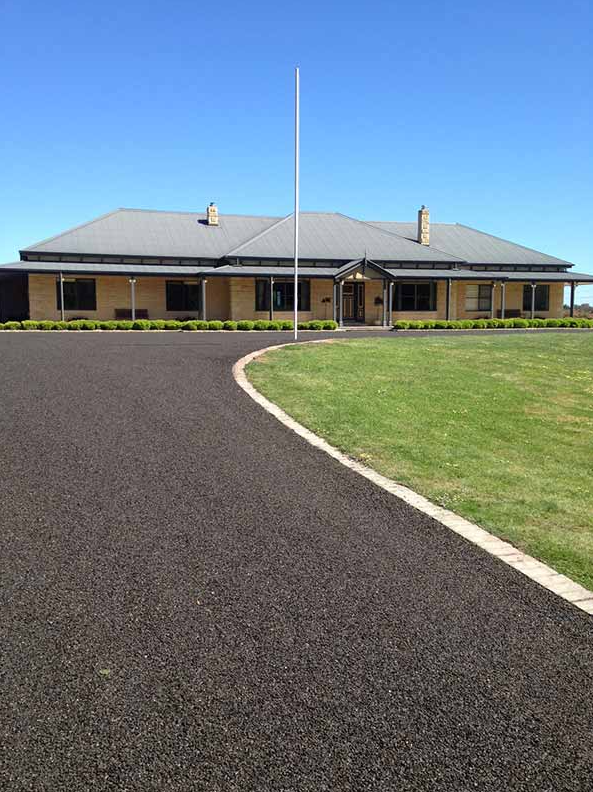Asphalt is a durable and cost-effective surface solution used widely across roads, driveways, car parks, and industrial sites in South Australia. But like all materials, asphalt has a finite lifespan. Knowing when to repair, resurface, or replace your asphalt can significantly impact its longevity, performance, and cost-effectiveness.
At Barossa Road Valley Tech SA, we work with clients throughout Barossa Road Valley and regional SA to extend the life of their surfaces while ensuring maximum safety and functionality. In this article, we break down the asphalt lifecycle to help you understand when to take action and which treatment option makes the most sense for your situation.
The Asphalt Lifecycle at a Glance
Asphalt surfaces go through several phases over time. Their condition will depend on factors such as:
- The quality of installation and materials
- Climate and exposure to UV, rain, and heat
- Traffic volume and load
- Drainage and base preparation
- Maintenance frequency
Understanding the condition of your surface and matching it with the right solution—repair, resurface, or replace—can save you money and minimise disruptions.
Phase 1: Routine Repair
When to Repair
In the early stages of wear, asphalt may show minor signs of deterioration such as:
- Hairline or block cracking
- Isolated potholes
- Small depressions or ruts
- Surface stains or fading
These are typically surface-level issues that don’t yet affect the structural integrity of the pavement.
Repair Solutions
- Crack sealing to prevent moisture intrusion and further cracking
- Pothole patching to restore safety and smoothness in damaged areas
- Edge repairs to reinforce vulnerable boundaries of the surface
- Surface rejuvenation through cleaning and protective sealing
Minor asphalt repairs are low-cost and extend the life of the pavement when performed regularly.
Phase 2: Resurfacing
When to Resurface
As asphalt continues to age, more widespread wear will become apparent. If the base structure remains intact but the top layer is worn, cracked, or brittle, resurfacing may be the ideal solution.
Common signs resurfacing is needed:
- Alligator or spider web cracking
- Surface oxidisation (dry and grey appearance)
- Frequent minor repairs becoming ineffective
- Reduced skid resistance and surface roughness
What Is Resurfacing?
Resurfacing involves laying a new layer of hot mix asphalt over the existing surface. It’s more cost-effective than full replacement and can add 10 to 15 years of life to the pavement.
Benefits of Resurfacing
- Faster and less invasive than replacement
- Improves appearance and performance
- Restores smoothness and safety
- More sustainable and economical for large areas
At Barossa Road Valley Tech SA, we conduct thorough assessments to ensure resurfacing is appropriate before proceeding.
Phase 3: Full Replacement
When to Replace
Replacement becomes necessary when both the surface and the base layer are compromised. This typically occurs after years of heavy use, poor drainage, or a lack of maintenance.
Indicators replacement is required:
- Deep potholes and large cracks affecting structural integrity
- Uneven surfaces and widespread sinking or heaving
- Water damage that has eroded the sub-base
- Surfaces over 20 years old with significant deterioration
What’s Involved in Replacement?
- Full removal of existing asphalt and base layers
- Regrading and compacting the sub-base
- Installing a new, properly graded asphalt surface
- Optional upgrades such as improved drainage or reinforcement
Although it involves more time and cost, replacement restores the surface from the ground up and is often the only viable solution for long-term durability.
Making the Right Decision
The key to effective asphalt lifecycle management is knowing when to act. Delaying repairs or resurfacing often leads to more serious problems and higher costs down the track.
Factors to consider when choosing the right option:
- Current surface condition
- Usage type and traffic load
- Budget and timeframe
- Long-term maintenance goals
- Site-specific conditions (slope, drainage, access)
At Barossa Road Valley Tech SA, we offer expert inspections and honest advice to help property owners and managers choose the most suitable treatment for their asphalt surfaces.
Conclusion
Every asphalt surface in Barossa Road Valley has a lifespan, but smart maintenance decisions can greatly extend it. Whether your pavement needs a quick repair, a fresh resurfacing, or a complete overhaul, understanding where it sits in the asphalt lifecycle is crucial.
Barossa Road Valley Tech SA provides professional asphalt and bitumen surfacing solutions designed to match the unique needs of local conditions and usage. Contact our team today to arrange an on-site inspection and get tailored advice on how to restore or maintain your surface for the long term.
Call us on: 08 5122 4216
Click here to find out more about Barossa Road Valley SA
Click here to complete our contact form and see how we can help with your roofing needs.

